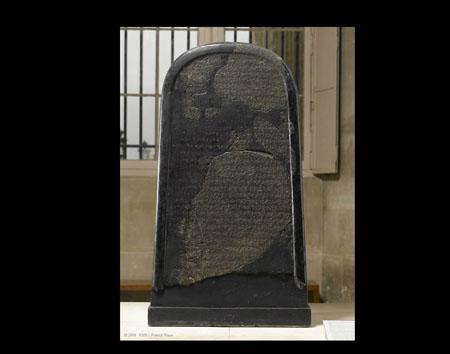You are here
Professional associations support efforts to retrieve Mesha Stele from Louvre
By JT - Oct 08,2014 - Last updated at Oct 08,2014
AMMAN — The Professional Associations Council (PAC) on Wednesday criticised the lack of official response from the French government to requests to return the Mesha Stele artefact to Jordan after nearly 150 years of being kept at the Louvre.
The Mesha Centre for Studies and Human Rights has been requesting the return of the stele from the Louvre Museum for more than six months now.
PAC President Ibrahim Tarawneh underlined the professional associations’ support for the call, which is a “huge national effort to retrieve one of Jordan’s historical treasures”, the Jordan News Agency, Petra, reported.
He voiced his “astonishment” over the French government’s “lack of response” on the matter, especially as the message was sent to French President François Hollande.
Tarawneh also urged the government to support the centre’s endeavour, noting that PAC will resort to UNESCO and the specialised international courts if no response is made.
Several Arab states, he said have retrieved their historical monuments through international legal channels.
Daifallah Hdeithat, president of the Mesha Centre for Studies and Human Rights, said he contacted a number of Arab officials to adopt calls to bring back the stele, but his efforts “landed on deaf ears”, prompting the centre to launch a national initiative to push for the return of the artefact.
The stele of King Mesha, which the Louvre says “constitutes one of the most important direct accounts of the history of the world that is related in the Bible”, was moved from Theeban, the historical capital of the kingdom of Moab, in 1868 when Jordan was under Ottoman rule.
“The inscription pays tribute to the sovereign, celebrating his great construction work and victories over the kingdom of Israel during the reign of Ahab, son of Omri,” the museum says on its website.
The arched shape of the stele and the basalt used are “characteristic of the votive steles erected in the Levant since the Bronze Age, from Ugarit on the Syrian coast to Hazor in Galilee”, according to the Louvre.
“The complete absence of figurative representation on this particular stele is exceptional, however, as is the predominant place given to the text,” the museum says.
The identification of present-day Theeban “as the biblical site of Dibon has been confirmed by the text of the stele and American excavations over the years that have shed new light on the capital of the kingdom of Moab”, according to the museum.
Related Articles
AMMAN — French Ambassador to Jordan Caroline Dumas on Tuesday stressed the French government’s understanding of the historic importance of t
The French embassy in Amman has informed the Mesha Centre for Studies and Human Rights that it has sent the Louvre Museum the request to retrieve the Mesha Stele artefact, Mesha Centre President Daifallah Hdeithat said Tuesday.
The Mesha Centre for Studies and Human Rights on Tuesday held its first meeting as part of a national campaign to retrieve the Mesha Stele from the Louvre Museum and return it to Theeban.

















